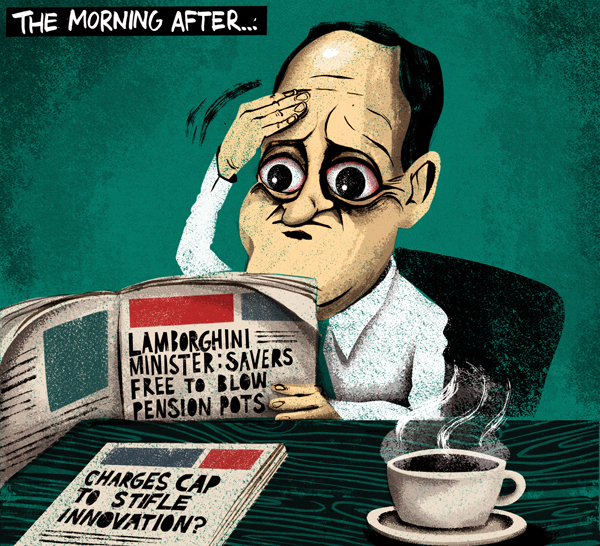Editorial: What you wish for
Last year in this column I asked the pensions minister to “go big or go home” on the charges cap, arguing that only a 0.75 per cent level – rather than 1 per cent – would justify the regulatory burden.
But of course, it was not simply a case of the level but what was included within it. Well, as everyone was nursing a hangover from the Budget’s retirement reforms, we found out.
It will apply to all management charges, but not to transaction costs. That is, until 2017, when the government will reassess both the level of the cap and whether transaction fees should be included.
Pensions minister Steve Webb was bullish in the House of Commons, promising to put charges in a “vice” that will tighten “year after year”. That is, a vice that may or may not tighten once in three years’ time.
Illustration by Ben Jennngs
Whether it was capitulation to political pressure or not, the government’s move should be welcomed as a material protection for vulnerable, uninitiated savers.
But there has to be scrutiny of the small print. In particular, the bending over backwards to accommodate charging structures such as that of the government-sponsored Nest scheme – where a contribution charge and lower AMC mean those in the scheme for less time pay more.
Ros Altmann called for this structure to be reformed, pointing out “older workers lose out”. Darren Philp of Nest competitor The People’s Pension tweeted: “So Govt will allow schemes to charge 2.5% contribution charge plus 0.4% AMC. How can that be good for pension savers?”
It is not obvious why active member discounts that allow employers to reward longer-serving employees are being banned, while regulatory lines are being drawn to allow other schemes to keep a similar inequality.
Anyone that has had the delight of seeing the table for converting these dual contribution charges into a single fee will scratch their head about why such complexity has been built into a system meant to even the playing field.
But even with these concerns this cap is good for savers and 2017 cannot come soon enough. For trustees, it is yet another stack of governance paperwork that is being left at their door.
Ian Smith is editor of Pensions Expert. You can follow him on Twitter @iankmsmith and the team @pensions_expert.


